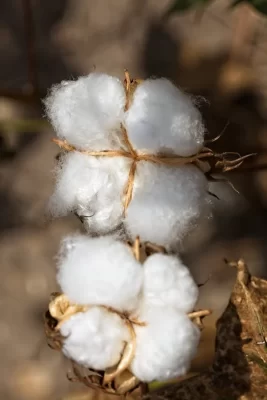The textile industry is one of the most water-intensive sectors, consuming approximately 79 billion cubic meters annually. With growing environmental concerns and increasing water scarcity, innovation in water-saving technologies is crucial. These advancements reshape how fabrics are produced, emphasizing sustainability without compromising quality.
Table of Contents
ToggleThe Water Crisis in Textile Production
High Water Consumption
Traditional textile production methods require vast amounts of water from growing cotton to dyeing fabrics. For example:
- It takes 10,000 liters of water to produce 1 kg of cotton.
- Dyeing and finishing processes account for 20% of industrial water pollution worldwide.
Pollution and Wastewater
Water used in production often contains harmful chemicals, which are discharged into rivers and oceans. This leads to contamination, affecting ecosystems and communities.
Innovative Water-Saving Technologies
Closed-Loop Systems
Closed-loop systems recycle water within textile plants, reducing waste and lowering freshwater usage. These systems filter and reuse water multiple times, ensuring efficient use without environmental harm.
Digital Printing Techniques
Unlike traditional dyeing, which immerses fabrics in water-based dyes, digital printing uses significantly less water. It applies precise designs directly onto fabrics, cutting water usage by up to 95%.
Foam Dyeing Technology
Foam dyeing, like IndigoZERO, replaces water with foam to apply dye to fabrics. This method reduces water consumption by up to 90% while delivering consistent color quality.
Supercritical CO2 Dyeing
This advanced technique uses pressurized CO2 instead of water for dyeing fabrics. It eliminates water use and recovers nearly all CO2 for reuse, making it a highly sustainable option.
Recycled Fibers
Innovations in fiber recycling minimize the need for water-intensive raw materials. Brands like Econyl produce yarn from ocean and landfill waste, reducing the environmental footprint.
Sustainable Practices by Leading Brands
Levi’s Water<Less® Initiative
Levi’s has saved over 4.2 billion liters of water since launching its Water<Less® program. The brand uses alternative methods like ozone washing and recycled water.
Adidas Parley Collection
Adidas collaborates with Parley for the Oceans to create garments from recycled marine plastic. This reduces reliance on virgin materials and lowers water usage.
H&M Conscious Collection
H&M focuses on water-efficient processes and eco-friendly materials, ensuring that fashion production is mindful of environmental impact.
The Role of Artificial Intelligence and IoT

Smart Water Monitoring
AI-powered systems monitor water usage in real-time, detecting inefficiencies and leaks. This allows manufacturers to optimize processes and conserve resources.
Predictive Analytics
Predictive tools analyze production patterns to recommend water-saving strategies. This ensures consistent quality with minimal resource waste.
Benefits of Water-Saving Technologies
For the Environment:
- Reduced Pollution: Cleaner production methods mean fewer chemicals in water sources.
- Conservation: Lower water usage protects natural reserves.
For Businesses:
- Cost Savings: Efficient processes lower operational costs over time.
- Consumer Appeal: Eco-friendly practices resonate with environmentally conscious buyers.
Challenges in Implementation
High Initial Costs
Adopting water-saving technologies requires significant investment. Many small-scale manufacturers struggle to afford these innovations.
Lack of Awareness
Many producers lack knowledge about sustainable alternatives and their long-term benefits.
Steps Toward a Water-Efficient Future
For Manufacturers:
- Adopt Proven Technologies: Start with scalable solutions like digital printing or water recycling systems.
- Collaborate Partner with sustainability experts and NGOs to share resources and expertise.
For Consumers:
- Support Responsible Brands: Choose companies committed to water-efficient practices.
- Advocate for Change: Raise awareness about the water crisis in textiles and demand action.
Conclusion
The future of fabric lies in sustainable innovation, where water-saving technologies play a pivotal role. By embracing closed-loop systems, digital printing, and recycled fibers, the textile industry can significantly reduce its water footprint. This transition not only protects the planet but also ensures a resilient and responsible fashion ecosystem. Together, manufacturers and consumers can champion a greener, water-efficient future.
About IGREEN TEX
IGREEN TEX is a provider of fashion and textile products, offering a wide range of apparel both domestically and internationally. Our commitment to quality ensures that our products not only meet the highest standards but also promote eco-friendly practices.
IGREEN TEX VIETNAM CO LTD
Address: No. 83, A4 Street, Ward 12, Tan Binh Dist, HCMC
Tax code: 0315844409
Email: info@igreentex.com
WhatsApp/Viber/Zalo: +84 938.045.900
